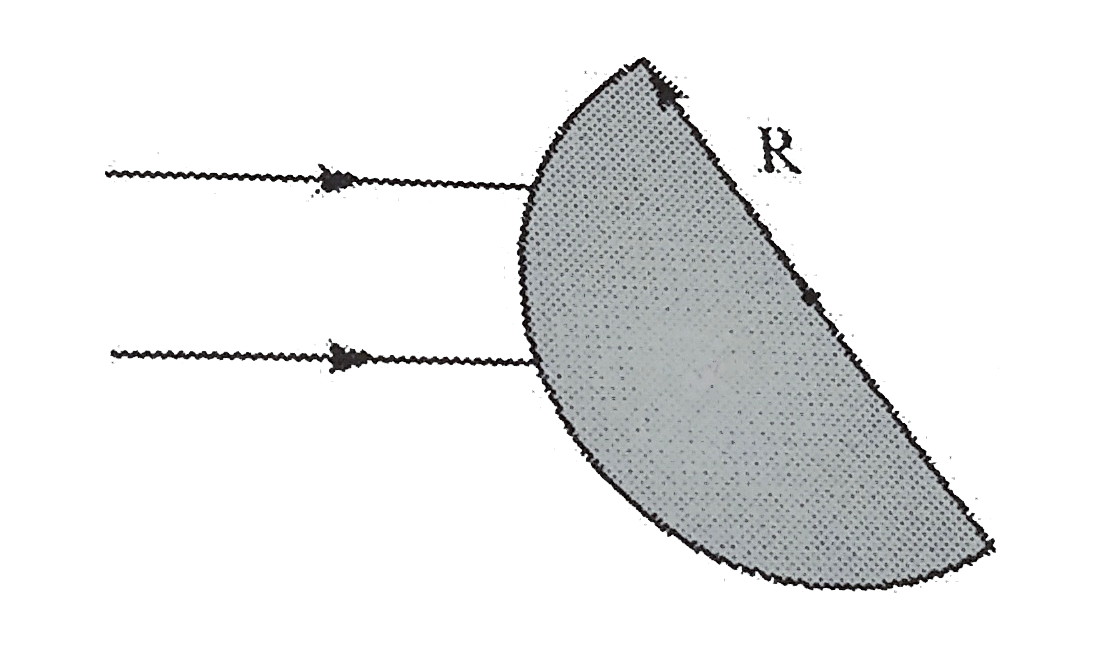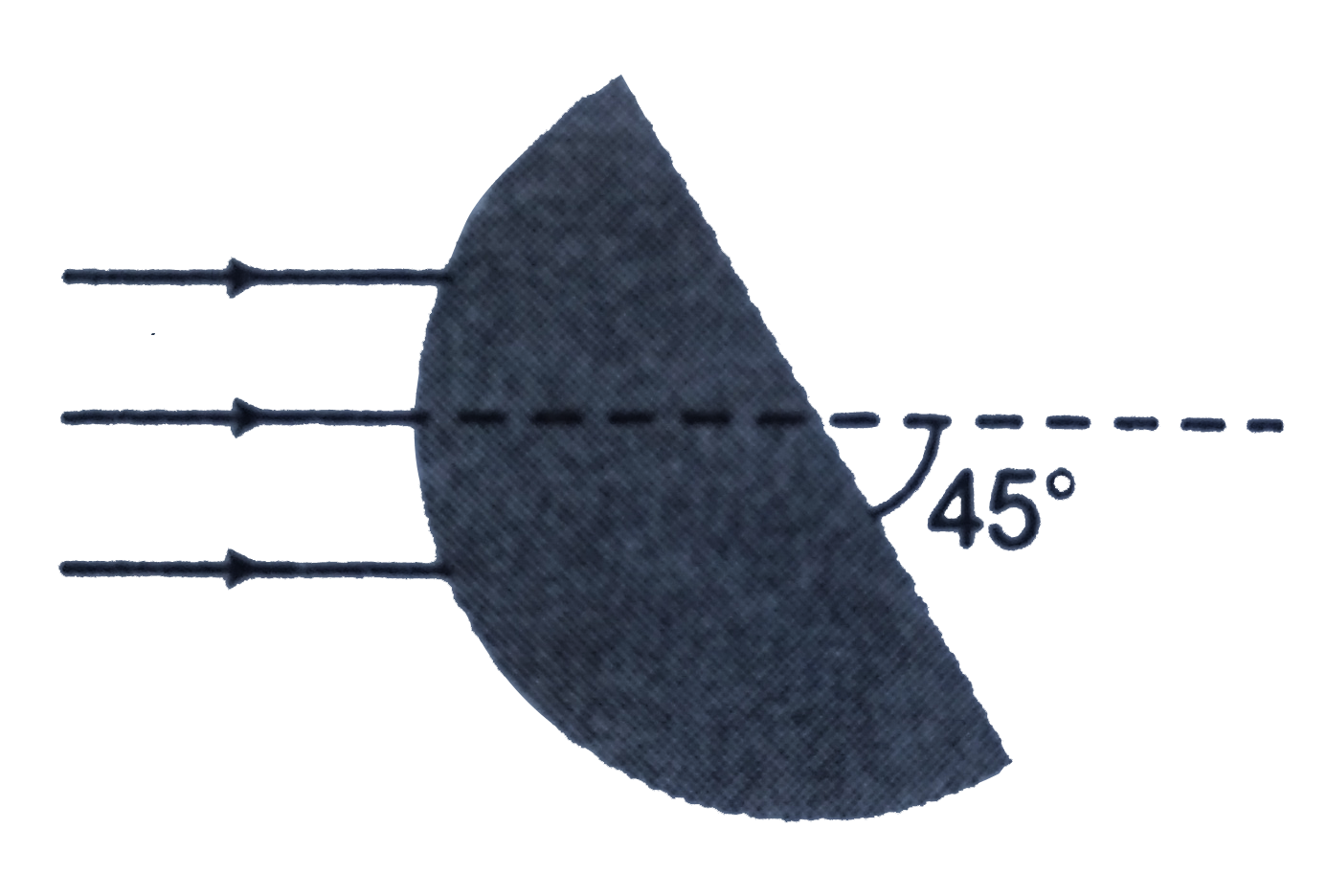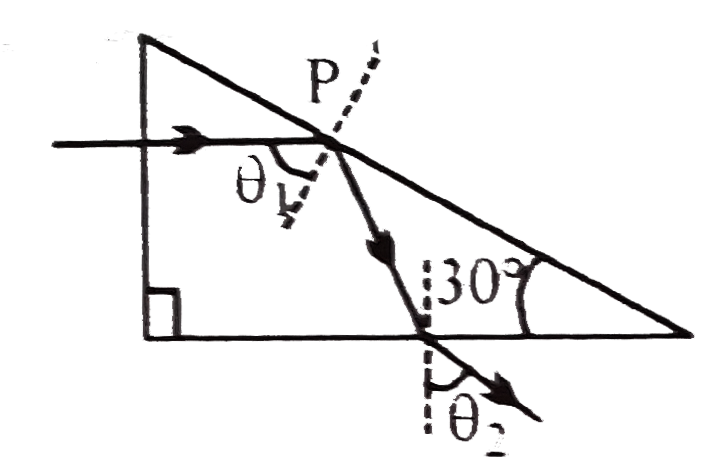A parallel beam of light is incident normally on the flat surface of a hemisphere of radius 6cm and refractive index 1.5, placed in air as shown in figure (i). Assume paraxial ray approxiamtion.
 .
.
The rays focused at 12cm from the point P to the right, in the situation as shown in figure (i)
The rays focused at 16cm from the point P to the right, in the situation as shown in figure (i)
If the rays are incident at the curved surface (figure (ii)) then are focused at distance 18cm from point P to the right.
If the rays are incident at the curved surface (figure (ii)) then are focused at distance 14cm from point P to the right.
The correct Answer is:A, D
N//a
Topper's Solved these Questions
- BOOK - RESONANCECHAPTER - GEOMATRICAL OPTICS EXERCISE - Exercise-379videos
GEOMATRICAL OPTICS
- BOOK - RESONANCECHAPTER - GEOMATRICAL OPTICS EXERCISE - Advance level Problems35videos
GEOMATRICAL OPTICS
- BOOK - RESONANCECHAPTER - GEOMATRICAL OPTICS EXERCISE - Exercise-1142videos
GEOMATRICAL OPTICS
- BOOK - RESONANCECHAPTER - EXPERIMENTAL PHYSICSEXERCISE - PART -II10videos
EXPERIMENTAL PHYSICS
- BOOK - RESONANCECHAPTER - GRAVITATIONEXERCISE - HIGH LEVEL PROBLEMS16videos
GRAVITATION
Similar Questions
A parallel beam of light is incident on the surface of a transparent hemisphere of radius R and refractive index 2.0 as shown in figure. The position of the image formed by refraction at the first surface is :
 View Solution
View SolutionA ray of light is incident on the surface of a glass plate of refractive index 1.6 at polarzing angle. Calculate the angles of reflection and refraction.
View Solution
Knowledge Check
- Question 1 - Select One
When a ray of light is incident normally on one refracting surface of an equilateral prism of refractive index 1.5, then
Athe ray undergoes total internal reflection at the second refracting surface of prismBemergent ray is deviated by 30∘Cemergent ray is deviated by 60∘Demergent ray just grazes the second refracting surface of the prism - Question 2 - Select One
A parallel narrow beam of light is incident on the surface of a transparent hemisphere of radius R and refractive index μ=1.5 as shown. The position of the image formed by refraction at the image formed by refraction at the spherical surface only as
 AR2B3RCR3D2R
AR2B3RCR3D2R - Question 3 - Select One
When a ray of light is incident normally on one refracting surface of an equilateral prism (Refractive index of the material of the prism =1.5
AEmerging ray is deviated by 30BEmerging ray is deviated by 45∘CEmerging ray just grazes the second refracting surfaceDThe ray undergoes total internal reflection at the second refracting surface
AN unpolarised beam of light is incident at the polarising angle on the surface of a transparent medium of refractive index 1.6. The angle of refraction in the medium is
View SolutionA ray of light is incident normally on one of the equal faces of a right isosceles prism of refractive index 1.5. The angle between incident and emergent rays is
View SolutionA ray of light is incident normally on one face of30∘−60∘−90∘prism of refractive index 5/3immersed in water of refractive index4/3as shown in figure.
 View Solution
View SolutionA ray of light is incident normally on one face of 30∘−60∘−90∘ prism of refractive index 5/3 immersed in water of refractive index 4/3 as shown in figure .
_E01_076_Q01.png) View Solution
View SolutionA ray of light is incident on the surface of plate of glass of refractive index 1.5 at the polarising angle. The angle of refraction of the ray will be
View Solution

